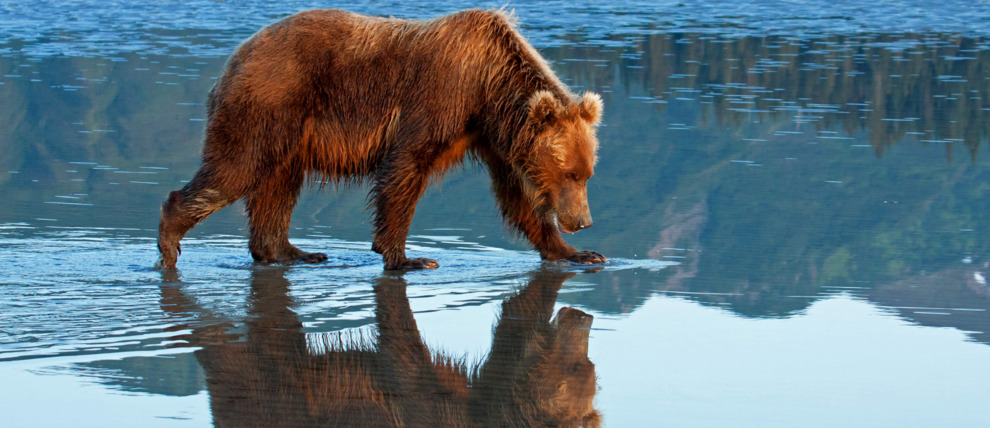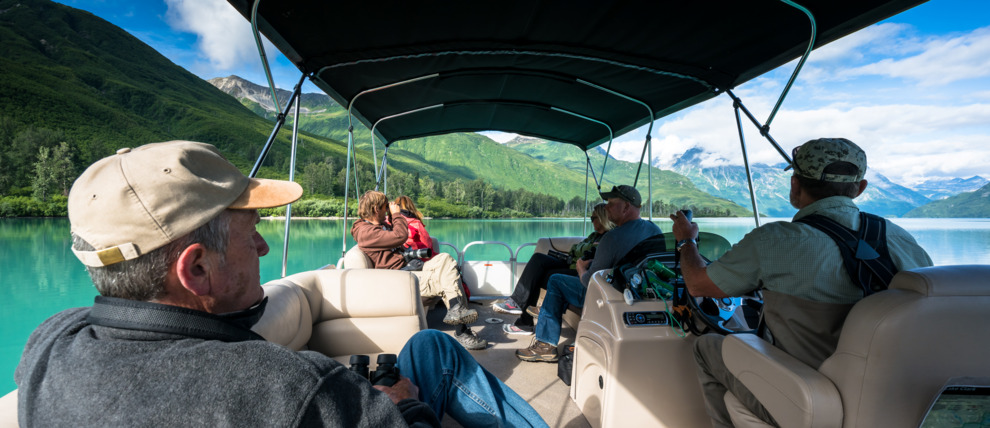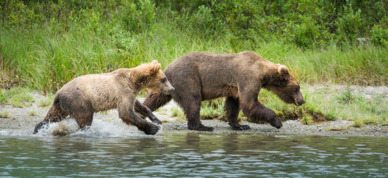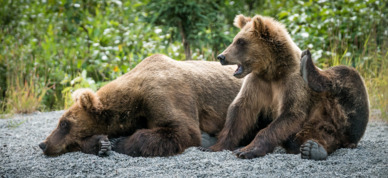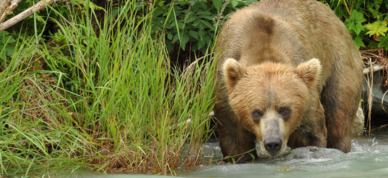Lake Clark National Park
Lake Clark National Park is located 120 miles southwest of Anchorage. The park was established in 1980 to protect the area's critical salmon streams, scenic beauty, abundant wildlife, and the living culture of the area's indigenous Dena'ina people.
The park's richly diverse landscape is a microcosm of greater Alaska. There are coastal temperate rainforests, mountain valleys carved by glaciers, swaths of tundra, and snowcapped peaks. Alaska's wildlife is widely represented as well, with black and brown bears, eagles, moose, harbor seals, ptarmigan, and even wolves roaming the park.
What to Do in Lake Clark National Park
Bear viewing is one of the top things to do in Lake Clark National Park. Abundant lakes and rivers lace throughout the park, forming one of the world's most important salmon fisheries. Just like in Katmai National Park, an abundant food source in Lake Clark leads to abundant bear viewing. But unlike Katmai, in Lake Clark there are two distinctive bear viewing opportunities: By beach or by boat.
Brown bears congregate along the wide beach of Chinitna Bay to feast on sedge grass, clams, and fish. Farther inland, the banks of Crescent Lake see both brown and black bears fishing for salmon. In Chinitna Bay, you're bear viewing on foot, while at Crescent Lake you view by boat from Redoubt Bay Lodge. Please visit our bear viewing tours page for more information about Lake Clark National Park activities.
Along with bear viewing, visitors enjoy a wide variety of recreational activities that include backpacking, boating, hunting, and sport fishing. The Lake Clark National Park Visitor Center is in Port Alsworth, which is accessible by air charter service. Several private lodges are also in Port Alsworth. There are no services in the park, nor is there road access.
How to Get to Lake Clark National Park
Most visitors travel to Lake Clark National Park by plane from Anchorage, Homer, or Kenai. Alaska Tour & Travel can coordinate lodging and transportation in these towns. For more information about additional outdoor activities in those areas, check out our Things to Do pages.


